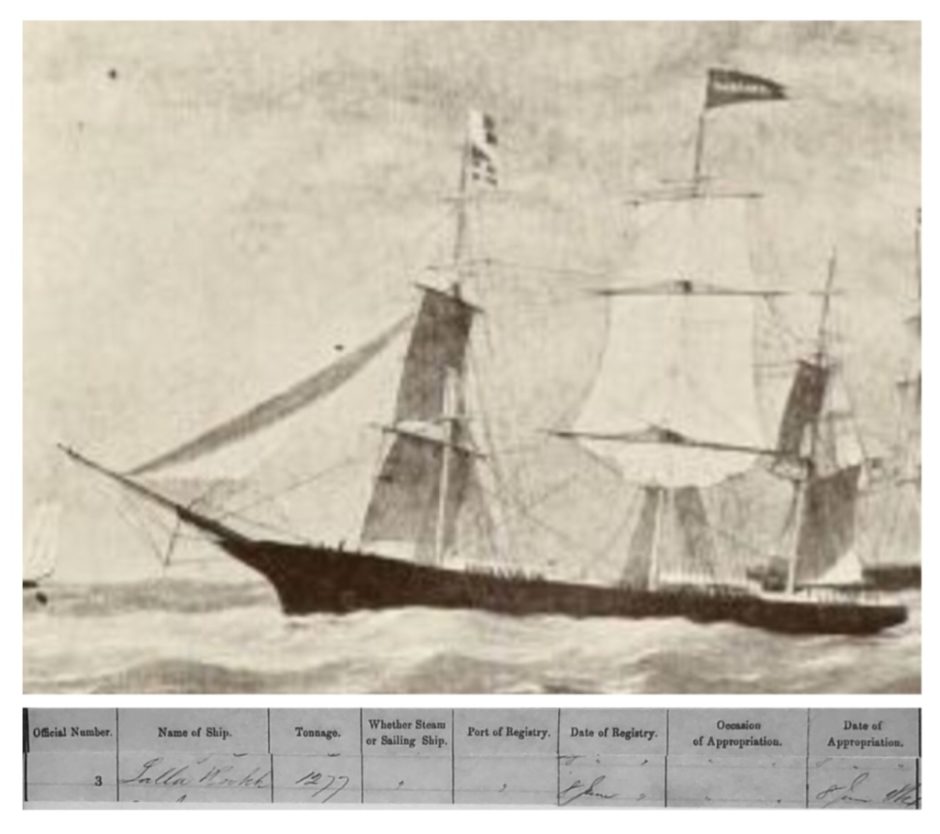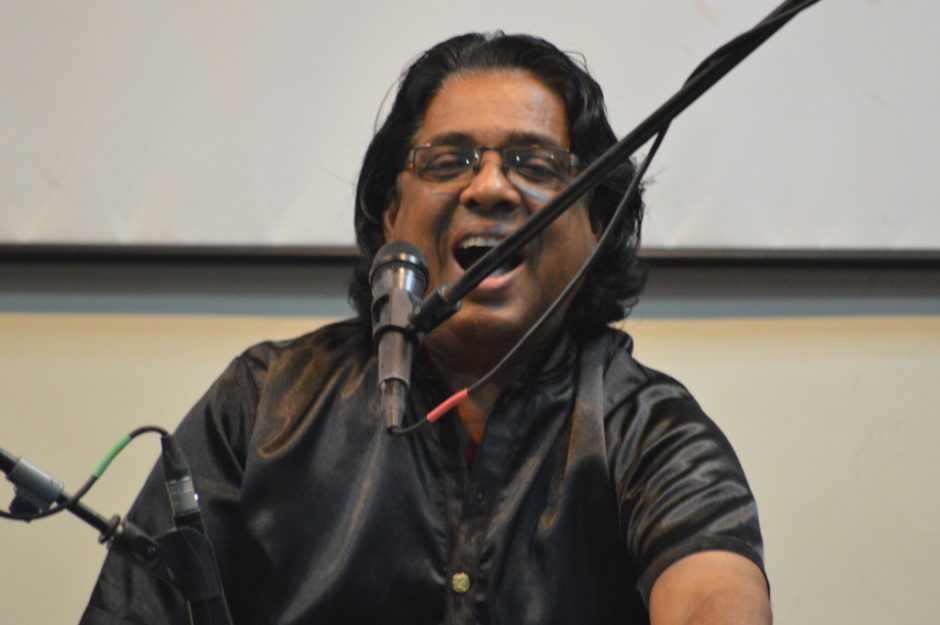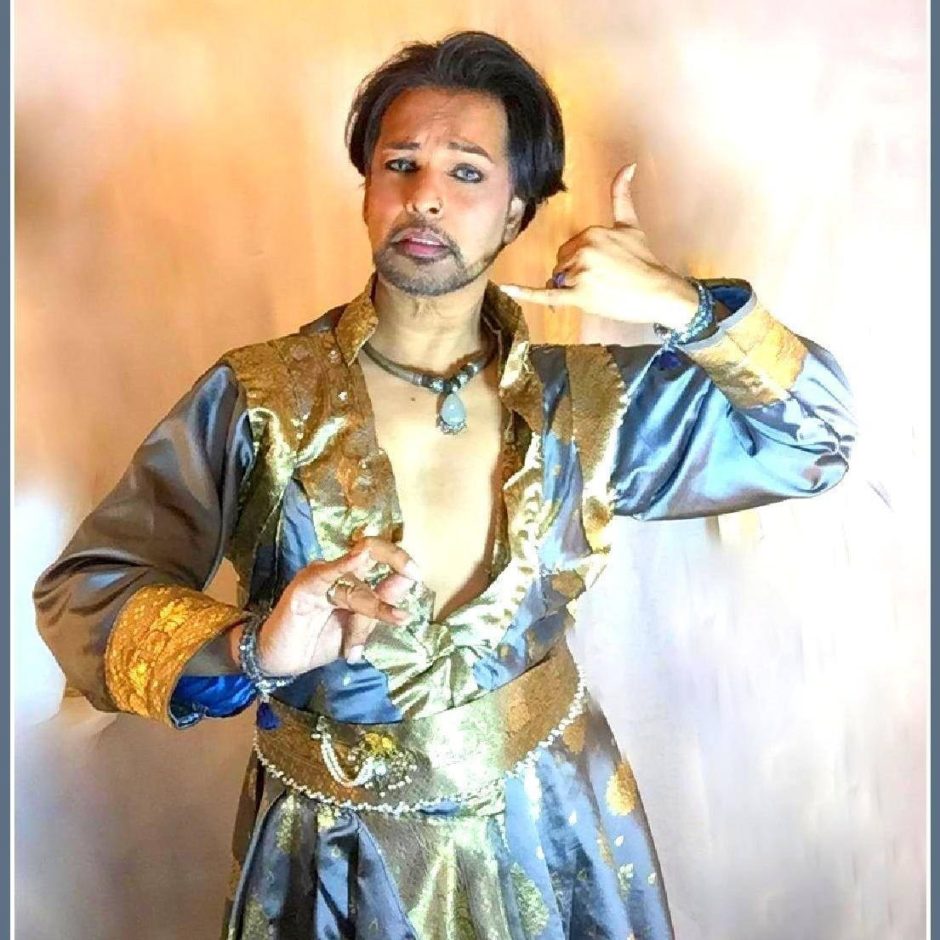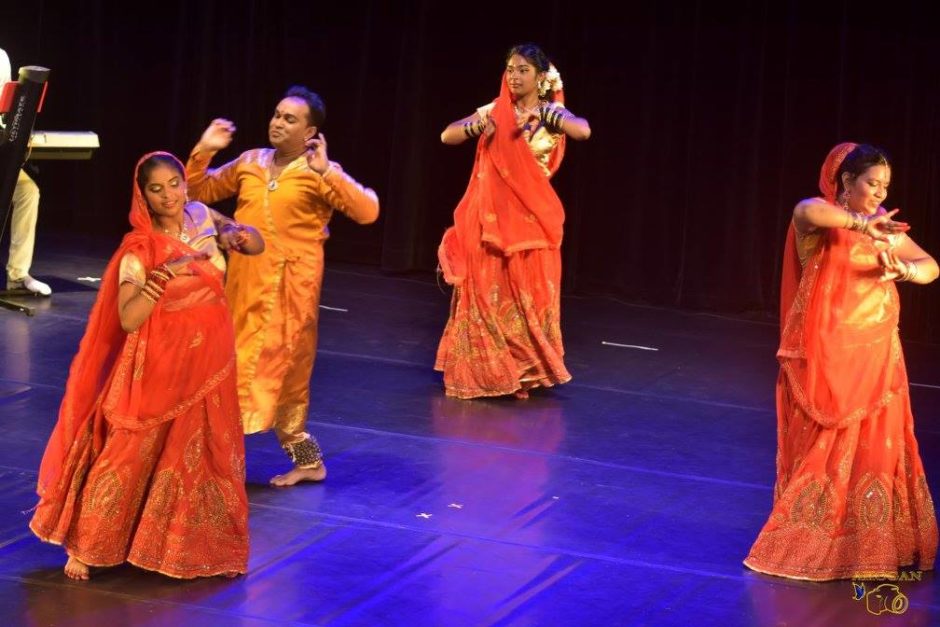How Indian dance developed from India (South America – Suriname)
by Perkaash Makhan-Shakshi Gopal
What a blessing to see Indian dance spread all around the world. Born 52 years ago in Suriname, South America, Perkaash Makhan started having Kathak dance classes at the age of 4 years in 1973. This was the year when the very first Indian dancer in the kathak North Indian dance style, Mr Gora Sing, came to Suriname.

To continue I have to explain you a little bit about the History of Suriname. At the time that Suriname was a colony of the Netherlands the slavery of the black Africans was just ended in 1863. The native people, the Red Indians, were mostly killed or driven to escape in the jungles, but the country was well-known for their trade in sugar, coffee, tobacco vegetables, fruits and all kinds of herbs. The Dutch were in search for hard working labor. Guyana, Suriname’s neighboring country, was at that time a colony of Great Britain and they too had ended the slavery in 1864. So, the Great Britain who ruled India at that time suggested to bring hard working cheap labors from Bihar, uttar Pradesh. The Netherlands made a deal with Britain to also bring these hard workers to Suriname and the first ship arrived 5th of June 1873 called the Lalarook. Between 1873 and 1916 these were Indians with a contract for 5 years, some of them would go back after their contract period but a large group decided to stay and make Suriname their own country and called Suriname Sarnam desh. Meanwhile, these people had developed their own style of living with the knowledge they had brought from India. There was not much time for entertainment because of the hard work as contract laborers. Eighty percent of the Indians where Hindus and twenty percent were Muslim. According to their faith there were cultural celebrations, birth, marriage, etc. There where there is celebration there is music and dance.
Dance
There were two performing dance styles at that time. The Londa ke nac and the Ahirwa ke nac both were performed by male dancers, and the common dance form was called Bhaitak gana. As a young boy at 6 I learned these two styles from the dancer who danced at my parents’ wedding, but with the promise to my dad that I would not use that as performing art because it could be not respected later as a classical Indian dancer.
The Londa ke nac – usually solo dance

Foto Aafke Huizinga
Because it was not common that females would dance at that time, a male would be dressed up as a female, they would call the dancer Nachenja and to make it personal ad devi or sundari at the end of the chosen name. The dance style was not complicated but you should have a good stamina, because you would dance long hours with small breaks, and you would have to sing small parts with the Baithak gana band. The dancer would wear a long skirt with many colors from the hip till the ankles. On his hip he would wear a hip scarf with small ringing bells. He would also wear a blouse with long sleeves and gloves to hide the masculine arms and hands. On their head there was a shawl and on the forehead a tiara made from plastic flowers and chinning beats with sometimes one or two long hair braids. At his ankles he would wear ankle bells and he would usually be dancing on bare feet at those times. He would wear a good layer of makeup to cover possibly translucent hair on his face and would use red lipstick on the lips and cheeks as rouge from the same lipstick it would make small dots above the eyebrows. The dancer would pray Bhoemi Pranam before it starts dancing and sings a prayer for protection. He salutes by stamping on de ground in Nameshkaar (greeting position). The Garuda position would be used a lot by holding the ends of the skirt at shoulder height at left and right, lots of pirouettes, sidewalks, subtle shoulder shakes, belly camel, handwaves, and thumps in the navel while have both skirt ends in the rest of the fingers.
The musician would play dhol, the harmonium and a dhantal and sometimes accompanied small instruments like the majira and the kartaal.
The Ahirwa ke nac – duo dancer
They call this the farmer dance. In this dance style two men would sing and dance on the beat of the Nagara sometimes accompanied with a Dhapla. These dancers would pray for strength and would wear red pants till their knees what would represent the langot of Hanuman. They sing mostly from the Ramayan. Their pants would had woven ghoenroes, but a special kind of ghoenroe (called do pela ki ghoenroe, the ankle bells with two flower petals ) while the Nachenja wears four petal ghoenroes. Sometimes the two kinds would be combined, they wear ghoenroes at their ankle and sometimes even at their wrist. On the top they wear a highly decorated red vest with mirror work and a dupatta folded and tided around the head with some hanging at the left side. Over your waist you tide a chamer, a half circled stiff clothe with mirror decoration and at the middle of the navel they would wear two hanging slendangs representing wings. You needed a good ear for hearing the different beats played on the nagara and would have tala knowledg . Make up was not really used other than kayel (eyeliner) and Tilak (stripe on forehead).
These two styles where catteries to the Nautangi style (entertainment) in India. Two respected dancers in Holland with the required knowledge are Sundar Hira and Glenn Radhe.
The Baithak gana

Foto © Michiel van Kempen
This was the dance style what every Hindustani would dance. Baithak gana means sitting together and singing. There is a small band with a singer where usually 3 instruments were required; the harmonium, the dhol, and the dhantal. People who danced would put their left foot flat and the right foot behind it and move on the beat, usually with one hand on the hip and one making wave movements, or both hands in waving movements. There is lots of turning, but you are free to dance on the beats and express yourself.
The Baithak gana singers had lots of knowledge about different kinds of songs and styles of singing that you can still find in the Indian Tradition, while the modern singers mix with Baithak gana with calypso and merengue. It’s about Chatni nowadays, meaning a fast, bobbling kind of music of which you would not like to hear the translation. The singing is often combined with drinking alcohol. The original Baithak gana is meant as a respectful expression from the heart.

Cinema movies as inspiration for Indian dance and music
In the fifties and sixties, the Indian movies now called Bollywood movies, were brought into the cinemas of Suriname. Some cinemas in Suriname were Yasodra, De Paarl, Savitri, Tajmahal, Lincoln, Star and many more. People would copy a lot of, music, dance, fashion and lifestyle elements into their lives.
At that time people thought that certain songs danced by some dancers were Indian classical dance because of their lack of knowledge, examples are; Vyjantimala, Padmini, Rageni, Meena kumari, and Wahida Rehman. Later on other famous names were Hema Malini, Rekha and Rena Roy. Most of these dancers would make combinations from techniques from different dance styles and make something new called semiclassical or filmi dance. Some dancers like Gopi Kishan Sitara Devi would dance Kathak style from de Banares gharana, you would rarely see a dance in its origin in an Indian movie.
Some examples of films from which dance was always was copied in Suriname include: Neel Kamal Punarjanam, Pardesi, Guide, Kohinoor, pakeeza, Jhanak jhanak payel baje, Navrang, Jewel thief, Mughal-e-zam and more.
It was not common that a lady would dance although in the beginning of the seventies there was a lady called Chandra Wati Sukhai who was dancing semiclassical dance copied from Bollywood films. She got a scholarship from Mr Babu Mahatemsing, the same person who suggested myself for a scholarship later on. She left Suriname and went to India for dance studies in the Orrisi dance style.
The first Indian Dance Guru in Suriname, 1973
At cultural center Sanskriet Samaaj seva (Rajpur, Mahonilaan) the first Indian kathak dancer came to give dance classes. He was from origin an Indonesian, but he grew up in India and later on moved to Guyana. He spoke Hindi and English and was a very strict guru. I was actually too young to attend classes so my father lied and said that I was five years. There were nearly 100 students at the beginning. Because people did not understand what real Indian Classical dance was it was very difficult to teach kathak, because people thought semiclassical dance was kathak. Because people requested programs, he would use semiclassical movie songs that which was highly appreciated by the audience. Later when he became well-known, he started to give dance classes at the Cultural Center of Suriname (CCS). After some years he left and because there was no guru at that time at the age of eight years I was asked to give dance classes till there would be another guru because I had won many prices in dance competition and often on TV students still would want to learn to dance.
Indian Cultural Center
The Indian Cultural Center (ICC) brought a teacher from India in the Orrisi dance style named Teerath Ajmani. His wife would give folk dance Dandia and Garba, but this was only for a short period because it was not a success.
The Second Guru was Purnima Pandy in the kathak style. She had great success because she tried to understand the background of Sarnami people. She used lots of kathak and folkdance dance dramas and sometimes she would use semiclassical film songs.
Swami Yog dew (Swami Sing), Southern Indian dance

Meanwhile a Bharata Natyam guru came with the kalakchetra style, a very strict teacher. This teacher was not connected to the ICC but a well-known dancer nevertheless, as the teacher lived some years in Holland and even danced for the Royal house.
The ICC brought after Purnima Pandy Rakhi Dhir. This dancer would teach kathak dance.
First Kathak Dance school by Sarnami origin (dance school Perkaash)
I was at the age of seventeen and with support of the Minister of culture and youth the first Kathak dance school with Sarnami background was opened in Thalia. The demand was for a teacher who spoke Dutch and participated in lots of cultural programs representing Suriname with Indian dance both in and outside the country. Another important aspect was that I would have created new dances with techniques from the cultures living in Suriname, using their instruments like the Indonesian kendang or the African Djembe. I left Suriname in 1987 and went to give kathak lessons in Holland and changed my name from Perkaash Makhan to Shakshi Gopal. Living in the Netherlands gave me the possibility of many visits to India (39) for dance and spiritual development.

The ICC meanwhile had lots of gurus like Ram Mohan, Urmila Sharma , Manjjusha Saurakhia, Namrata Rai, Radhika Jha and Savita Devaker.
Madhoerie Jagmohan came from the Netherlands with the Bharata Natyam and has been a Guru in Surinam for many years. Students of her have completed Aranggetram.
Anand Ramcharan and other dancers in Suriname
Suriname has quite a few young talents who give dance classes. Anand Ramcharan, a male kathak dancer who opened his own dance school working at kathak and at the moment on old traditional sarnami singing Sohar style, is well-known for representing Suriname in other countries. Tanuya Manichand a beautiful great female kathak dancer from my generation giving classes and dancing in different styles as well . Namita Ajodia a Bharatanatyam dance teacher now who was my youngest student later did her aranggetram under guidance of Madhoeri Jagmohan.

Foto Anielkoemar Gangadin
It is a great privilege to have been a part of the dance history of Indian dance in Suriname and Holland. Nowadays wherever you look there are many dance schools of different styles. Please stop arguing which style is the best. We see lots of dancers dancing contemporary, running here and there on stage using now and then a mudra or just doing Indian dance on western music. It is possible to create a beautiful contemporary style if there is knowledge! Do not bring another dance style in discredit. Always respect any dance from the Lord of the dance Nathraja who has no description of which style he is dancing. You’ll find him in any Indian dance style. Enjoy dancing, Dance lovers!
This article is written because I always get the questions “how come that Indian dance is found in South America or that Indians in Holland are from Suriname? Are there many Indian dancers there and why are you not calling it Bollywood?” and I wanted to answer them in the form of an article.
This or parts of it may be always used as long as this source is cited with my name (Shakshi Gopal -Perkaash Makhan)
Perkaash Makhan / Shakshi Gopal krijgt vaak de vraag: Hoe komt Indiase Klassieke dans naar Suriname? Hoe heeft dans en muziek zich in Suriname verder ontwikkeld? Als eerste generatie kathak-danser uit Suriname vertelt hij over de ontwikkeling van de Indiase dans.
